How to Choose the Right Pad Printing Plate?
【Abstract】The performance of pad printing machine not only hinges on the quality of the machine but also on the quality of key accessories such as pad printing steel plates and ink cups. Now we focuse on two major types : photo polymer plates & steel plates. So, how to choose the right pad printing plate? Photo polymer plates have a simple and quick production process but a short lifespan, suitable for small-batch production. The steel plates have a longer lifespan but come at a higher price, ideal for large-scale production.

When it comes to pad printing plates, two types may come to mind first: photo polymer plates and steel plates. They are like the two stars in the printing world, each with its own charm and specialty.
1. Types of Pad Printing Plates
1.1 Photo polymer Plates:
Photo polymer plates are made of high-molecular-weight materials from photo polymers, which are more environmentally friendly compared to steel plates and have a simpler production process. However, they are highly sensitive to ultraviolet (UV) radiation and cannot be exposed to it. Most polymers require two exposures. After exposure, the plate needs to be developed in an alcohol solution or distilled water. The plate must then be re-exposed to harden the image area and dried to remove moisture.
・ Double Exposure (Variable Depth):
Double-exposure photo polymer plates can eliminate pinholes and allow the pad printing machine to create an etch depth best suited for the application, such as deeper etching for printing on wood or leather compared to non-porous materials like most plastics or glass.
・ Single Exposure (Typically 30 Microns Depth):
Single-exposure photo polymer plates are advantageous when the image requires extremely fine details that might be lost during the second exposure due to screening. Single-exposure plates are usually more expensive. Therefore, they are recommended only for extremely detailed images; for larger images, single exposure may result in insufficient ink transfer.
These plates are generally thinner and more flexible. The flexibility of photo polymer plates is better when printing on slightly uneven surfaces, making them economical but with a shorter lifespan.
1.2 Steel Plates
Steel plates have cores made of high-quality corrosion-resistant chromium steel or stainless steel, which are commonly referred to as pad printing steel plates. Traditionally, these plates are made of thick steel sheets that undergo a special hardening process and are etched through chemical milling. These plates undergo multiple processes such as sizing, grinding, toughening, polishing, and etching, which can take up to 25 days, prompting many manufacturers to keep a certain inventory. Therefore, the manufacturing process of steel plates is more time-consuming and costly than that of photo polymer plates. Although they are not as environmentally friendly as photo polymer plates due to the use of chemicals in etching and developing, their lifespan is much longer.
Available on the market:
Thin Pad Printing Steel Plates:
Thin steel plates, with thicknesses of about 0.3mm and 0.5mm, have a longer lifespan than photo polymer plates, estimated to reach 100,000 prints, and offer good flexibility.
Thick Pad Printing Steel Plates:
Thick steel plates, with thicknesses of about 5mm and 10mm (10mm plates can last up to 1 million prints), are the best partners for pad printing machines and are currently the most mainstream steel plates on the market.
TEFISEN's commonly used sizes of pad printing steel plates include:
|
Width |
Height |
Thicknesses |
Unit |
|
75 |
100 |
10 |
mm |
|
100 |
100 |
10 |
mm |
|
125 |
325 |
10 |
mm |
|
130 |
275 |
10 |
mm |
|
140 |
450 |
10 |
mm |
|
150 |
300 |
10 |
mm |
2. Factors to Consider When Choosing a Pad Printing Plate
・ Print Quantity (i.e., Plate Lifespan)
・ Maximum/Minimum Ink Coverage Area
・ Required Ink Thickness or Opacity
3. How to Choose a Pad Printing Plate
From a cost perspective, if using a pad printing machine with an open ink basin and blade system, photo polymer plates can enable quick replacements and higher production efficiency, making them suitable for small-batch production and sampling. The lifespan of such plates is around 20,000 prints. For print jobs exceeding 20,000 prints, one or more photo polymer plates will be used up. If you do not produce plates yourself, it is recommended to use steel plates instead, as replacing photo polymer plates requires stopping the pad printing machine, and frequent plate replacements may outweigh the benefits. Another issue is that photo polymer plates require the use of soft blades, which can easily sink into the parallel or larger ink areas, leading to faded image areas, i.e., scratching. However, the blade cannot be too hard, as it may scratch the plate; too soft, and it may cause insufficient ink transfer and other quality issues.
Therefore, for sampling and small-scale production, photo polymer plates can be used; for mass production or when harder blades are required, steel plates are more suitable. For print jobs exceeding 20,000 but less than 50,000 prints, thin steel plates can be considered; for those exceeding 100,000 prints, 10mm thick steel plates must be used.
|
Plate Type |
Lifespan (Prints times) |
Applicability |
|
Photo polymer Plate |
> 20,000 |
Suitable for all pad printing machines |
|
Thin Steel Plate |
> 50,000 |
Suitable for all pad printing machines |
|
Thick Steel Plate (10mm) |
100 Million |
Suitable for all pad printing machines |

